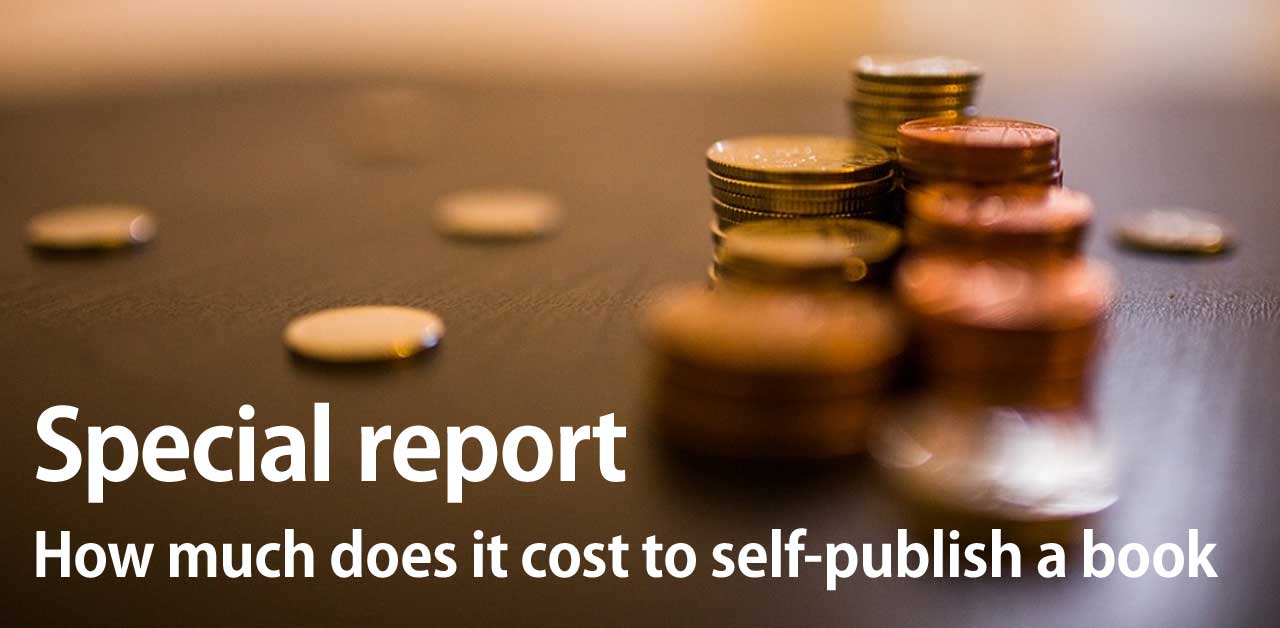
Cover and interior design
Here’s another instalment of how much does it cost to self-publish a book. I’m following on from editing and proofreading and formatting for print and Kindle. In this section, we will look at book design costs, specifically
- cover artwork
- interior artwork – features, photos and illustrations
Printed cover design prices (paperbacks)

- Average: £223.00
- Prices: £572.00, £411.00, £200.00, £190.00, £165.00, £120.00, £99.00, £27.00
- Suppliers: 2 online teams, 6 small businesses
Kindle cover design prices

- Average: £164.94
- Prices: £434.00, £342.00, £82.95, £70.00, £60.00, £0.70
- Suppliers: 3 online teams, 2 small businesses, 1 online tool (Canva)
I recommend that you start with the printed cover first as it’s easy to scale this down to work on a Kindle. Starting with the Kindle cover and trying to turn it into a much larger printed cover just doesn’t work – it has to be started again (…and you know how much I hate rework, so start with print first!).
Stock image prices (a good starting point for your cover)

- Average: £15.95
- Prices: £18.90, £5.99, £28.00, £10.90
- Suppliers: large companies
Stock illustration prices

- Average: £3.25
- Prices: £5.99, £5.00, £1.00, £1.00
- Suppliers: large companies
Custom illustrations

- Average: £47.33
- Prices: £60.00, £42.00, £40.00
- Suppliers: 1 small business, 2 freelancers
Back cover “blurb”

- Average: £56.38,
- Prices: £87.50, £50.00, £49.00, £39.00
- Suppliers: 3 small businesses, 1 freelancer
How to save time and money and avoid hassle
In most cases, it makes sense to choose a colour image “off-the-shelf” from a stock photo website and adapt it. This means you have more control of the finished look and you cut the cost and lead-time. You can create a mock-up of your cover using the sample photos available on stock sites. There will be a watermark on them showing they are samples (and stopping the unscrupulous stealing them) but they are good enough for experimenting with a few ideas.
Get feedback on the photos you like and your draft cover concept, before paying for professional help to make sure your cover is clear, crisp and compelling. That way you won’t need lots of revisions!
Important: image rights
I know many people like to wash their hands of the details when it comes to their book – after all you’re paying experts to take the strain! I recommend you buy your stock images so you get the rights to them. If the designer buys the image and then incorporates it in your edited book cover design that’s fine. They are not passing on the original image. However, if you want to use that stock image again in your marketing, perhaps to create flyers, you don’t own the rights to use it. You need to buy it again. Clearly, that’s not fun – it wastes time and money.
Impressions
Before you buy your image, check the licence. Is it a lifetime licence or only valid for 5 years? Can you use it for print projects? If so for how many impressions (copies)? 1,000? 50,000? 500,000?
Downloading purchased images
When you download from stock photo sites, you can only do it for a brief time. Stock sites tend to remove the ability to download later without buying the image again. Make sure you keep your artwork safe. I keep my stock photos in Dropbox.com. Google Drive would be another good place to keep your library of images.
Cover photo prices
The problem with estimating the prices for buying stock photos is their pricing policy. Most stock websites offer a pack of credits, rather than selling photos individually. The good news is the extra credits can be used for interior images if you need them. The bad news is many stock sites put an expiry date on their credits after you’ve bought them – often a year, but sometimes… just 1 month. (eek!) Make sure you use them before they elapse!
Avoid “express” services
Just like editing and proofreading, make savings by choosing slower service delivery.
Avoid paying for rework
Decide what you want then thoroughly brief your designer with your concept. This is the quick, easy and painless way to get your cover done. You don’t want to be the person with a woolly, half-baked idea, constantly nagging their designer with “that’s not quite what I meant, could you just…….” This rework is terribly frustrating for the designer. They might choose not to work with you in future if you’re “a difficult customer.” This can cause nightmares later. Let’s say you need a popup banner designed for your book signings at the last minute. You’ll be rushing, desperately looking for someone else to help. Because you’re rushing, your hastily prepared brief might be unclear. You end up in a vicious circle because you need more rushed rework and tweaks!
Look for combined deals
Some cover designers offer print and kindle in a bundle, and you can save money that way.
Interior artwork tips
Again, you can use stock photos, stock illustrations and your own drawings and photos to meet your needs. Microsoft Smart Art is good for simple illustrations.
Stock illustration
Some vector illustrations can be bought individually but many are only available through the credits system. Remember if you have credits left over from your cover image purchase, you can use them to get your illustrations from your stock image provider, if the right images are available in their catalogue. Illustrations tend to be specific to your knowledge and specialist subject. It’s often tricky to find a stock image that meets your needs. Remember, you can always use them as a starting point and get a designer to customise it for you. When thinking about the cost of an image, remember the saying a picture paints a thousand words. Adding series of images and removing lengthy, complicated verbal descriptions will make quite a dent in your proofreading bill!
Custom illustrations
If you can’t find a stock illustration, you will need a custom illustration. This is where the cost goes up quite a lot per image. Plus, you’ll need to wait for the designer to create them for you, which adds a time constraint. Most companies do business card design or website graphics. They tend not to offer hand-drawn illustrations. It’s a niche area catered for by specialists. If the illustration helps readers understand, then it needs to be added. No question. Imagine how difficult it would be to understand how a car works, if the author rambled on rather than providing a shorter, tighter description accompanied by an annotated diagram of an internal combustion engine.
Back cover “blurb”
The last cover design consideration is the back cover blurb. If you followed my advice and focused on the reader’s needs of your book, then you will know who’s reading your book, what they want to know and why that matters to them. This is perfect inspiration for putting together your back cover text. Remember it needs to be clear, concise and persuasive. You want people to buy your book, right? So, outsource this process if you have any concerns you might screw it up. Your book blurb can also be used on your websites, on your Amazon page and in your marketing materials, like book flyers to give away before a book-signing event. Getting help can be a real time-saver with these tasks. It makes sense to do a good job and get it right. Coming up next in my series on how much does it cost to self-publish a book is book promotion.


